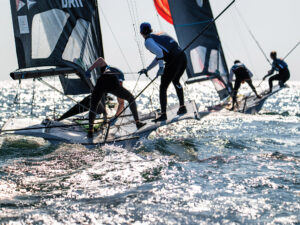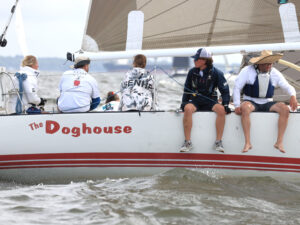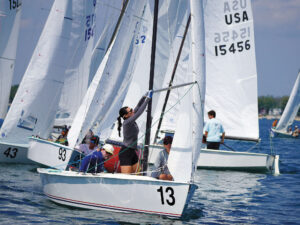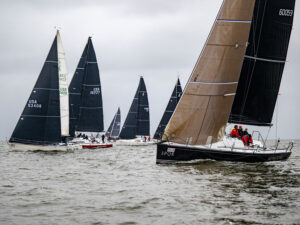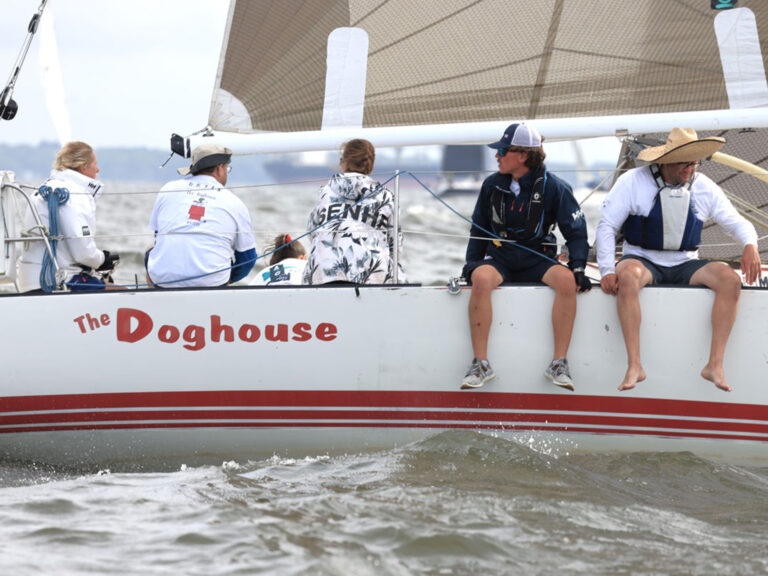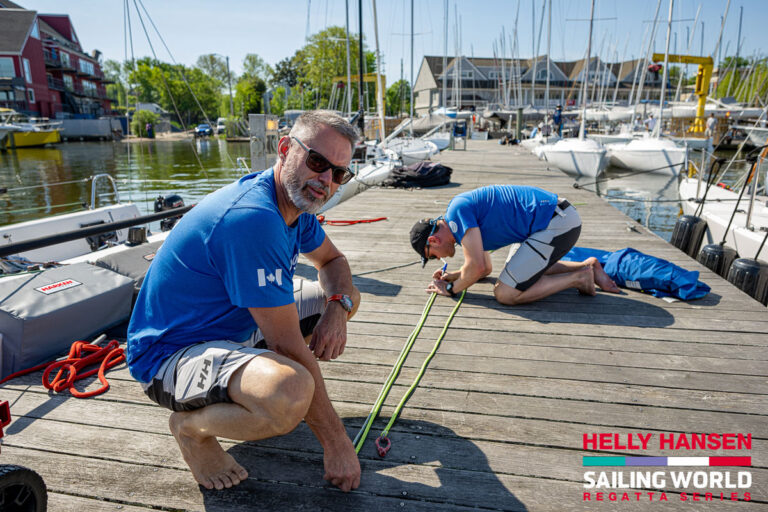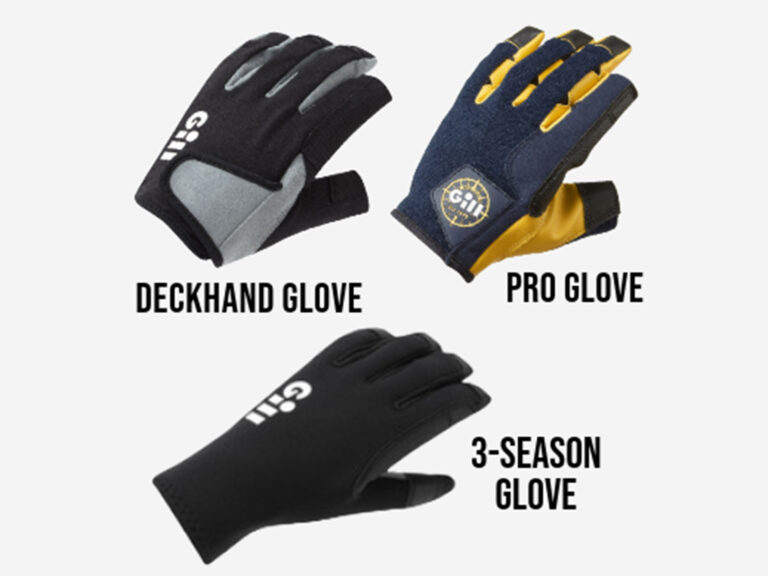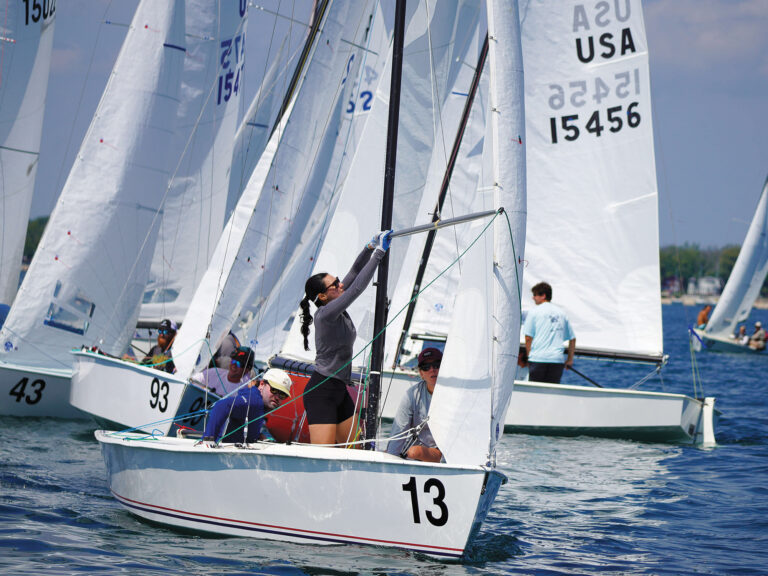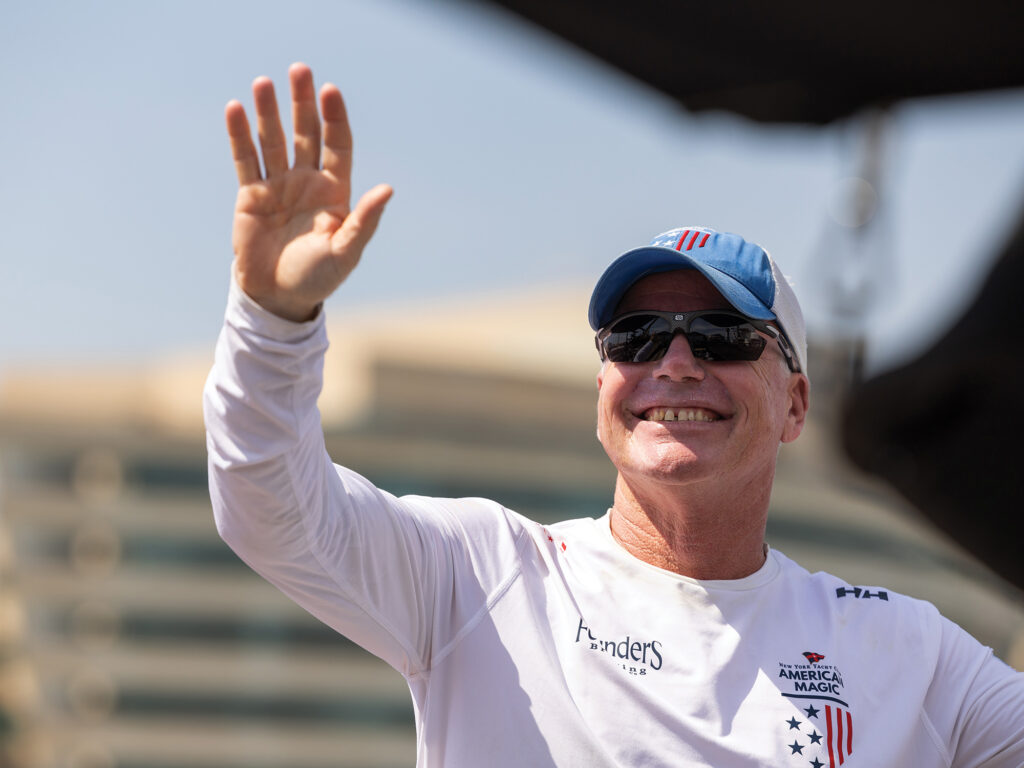
It’s mid-October, and the bases of Luna Rossa Prada Pirelli, Alinghi Red Bull Racing and American Magic are ghost towns, save for shore teams decamping and craning chase boats onto the hard. All three have been dismissed from the Louis Vuitton Cup, leaving INEOS Britannia to eventually get crushed by Emirates Team New Zealand 7-2 in the 37th America’s Cup Match.
American Magic’s skipper and president of sailing operations, Terry Hutchinson, meets me at Gate M29, the high-security entrance to the team’s Barcelona base. He escorts me through a second security gate and then through the team’s bike-storage room, usually jam-packed. With most of the team’s sailors and cyclors sent packing after three long years of going hard, there’s plenty of parking.
We continue to the front office, where boxed computer monitors sit among piles of cables and plugs, and then into the hospitality area, empty of visitors but with television screens still looping video of the team’s AC75 Patriot, sailing in fine trim. The boat itself is in the shed, decommissioned and wrapped for delivery to Pensacola, where the team will return in January for another possible run at the Cup.
Should there be another Cup challenge for American Magic, it will be their third. Auckland 2021 was a disaster marked by a catastrophic capsize. Barcelona was marginally better; this time bad luck was plentiful, resulting in a campaign that could have and should have had a stronger run to the match.
Hutchinson has just returned from a post-elimination decompression trip to Normandy, France. The team’s loss to Luna Rossa Prada Pirelli in the Louis Vuitton Cup’s second round-robin races still stings, he admits, but he’s working through exit interviews with team members and a “debrief document” for principals Doug DeVos and Hap Fauth.
“Figuring out where we were good. Where were we bad? How are we going to get better?” he says. “The hard part is that we can see how much we did well, and we can also see areas where we were dysfunctional, the interpersonal team relationships, and things that we could have done better.”
He’s not throwing anyone under the boat, except himself. American Magic’s failure to reach the match wasn’t because of a slow boat. “On the contrary,” Hutchinson says, glancing longingly at a video monitor across the empty room, admiring the sleek and shallow AC75 that he’s convinced was the fastest of the latest challenger fleet. “It’s hard to not feel that we underachieved again.”
In the “plus” column, however, he places the team’s operational efficiency, its financial standing, and a gem of a boat.
But bad luck is a cruel mistress with an ax to grind, and no one could have foreseen starting helmsman Paul Goodison falling down an open hatch, breaking ribs and getting sidelined at the most critical point of the series. His replacement, Lucas Calabrese, is plenty skilled, but the demands put upon him when thrust into the crux of competition were too great.
“He got thrown in at a really hard time against a competitor that had been together for six years. So, you can’t underestimate how good of a job they actually did in that series, and how good of a job Tommy (Slingsby, the starting starboard helmsman) did starting and winning the first cross.”
On Calabrese’s first day of Louis Vuitton Cup against Luna Rossa, American Magic led into the second weather gate in both races but lost them in the end. Those defeats were followed by two breezy races sailed at the red line of the AC75. They lost one race by 2 seconds and the other by 7. The one they lost by 2, Hutchinson says, was due to a momentary loss of control—in modern Cup parlance known as a “wobble.”
“That’s just time in the boat,” Hutchinson says. “When you’re going that fast, the trimmer, the helmsman and the flight controller need to be completely in sync. When you’re thrown into it, it’s hard to find that rhythm.”
Calabrese had sailed on Patriot for all of 10 days in the earlier phase of the campaign—and held the top speed, Hutchinson says. He was always full-tilt with the boat.
While there was much to lament watching the British and New Zealander sailors go at it, with that nagging feeling that “the wrong boat got to the final,” Hutchinson says that he’s uncertain what he and the team could have done differently.
Patriot certainly had its strengths as the most aerodynamic package of the AC75 fleet, the sailing team roster was rich, and three years of training and development went all according to plan.
“I do truly believe that we would be in a different spot here today without Goodie’s accident,” he says. “And that’s not a discredit to Lucas. The guy did a flawless job at stepping into a really difficult situation, and he showed so much mental fortitude.”
With Patriot being a third-generation AC75, Hutchinson says that the platform’s unique trait was an ability to crab to windward. How the boat is able to do so requires a deep explanation of the many forces at play on the AC75. Crabbing isn’t easy, he says, because it makes the boat “cranky,” but it’s powerful when done right.
Patriot was also noteworthy in the fleet for the use of recumbent cycles inside the hull. “I’m proud of the clever thinking and doing that,” he says. “The uninformed say that we were lacking power, but it couldn’t be further from the truth. Everybody has the same amount of power inside the boats, give or take. Power wasn’t the issue. The allocation of it may have been—the systems inside the boat, how many pumps we had in the boat versus what the others were using. That’s the bigger issue. We have to get better in the mechatronics and the control system, the mapping of each function—where it goes and how you do it.”
Science and technology are driving the evolution of Cup boats ever faster, with simulators, sensors, logic, HMIs, and especially AI making it ever more difficult for teams to develop and improve during the racing itself. They can improve with every race, but everyone else can too, and silver bullets no longer come overnight.
There also needs to be a shift away from on-water development to more hours in the simulator. That, Terry Hutchinson says, is where they made a mistake. Time in the sim now trumps time in the boat.
“It’s now bloody hard,” Hutchinson says about improving during the competition. Once the Cup racing gets going, there are not enough races, or time, to turn things around. “For the amount that’s being invested, we need to have more racing.”
For the next Cup, should American Magic challenge again, Hutchinson suggests a series of lead-up regattas—four or five—that would allow teams more racing. “That would allow all the teams the opportunity to develop, and all the racing leading up to that would be closer. We should all be racing together, including the defender. The America’s Cup will always have the relevance of the history of the regatta, but at a certain point, the regatta has to change if it wants to remain relevant. But it can’t just be another SailGP.”
While American Magic has a side seat at the table with the New Zealanders and INEOS Britannia as the Challenger of Record for the 38th Cup—when, where and how are TBD—all Hutchinson and the team can do is retreat to Pensacola, unpack the tools, and get on with the job ahead. But for Hutchinson, there’s still much more introspection to come, and figuring out a way to get faster without getting on the water.
“Our biggest area of improvement was going to come through time on the boat racing and racing development,” he says. That obviously didn’t happen in Barcelona with the early elimination. But there also needs to be a shift away from on-water development to more hours in the simulator. That, Hutchinson says, is where they made a mistake. Time in the sim now trumps time in the boat.
But there’s also the nagging question of his own leadership and his management of the talent. “We have to look at why we are not progressing further in the competition,” he says. “I can see the whys, but the whys don’t answer the question completely. In hindsight, knowing that we had a team dynamic to work on with Tom and Goody, should I have done something different and pushed further into the space of making it more of an open competition for the helmsmen and trying different combinations?”
As a point of reference, he cites INEOS Britannia replacing its starting port helmsman Giles Scott with Olympian and America’s Cup first-timer Dylan Fletcher in the weeks before the start of the regatta.
“The hardest calls are the ones that can unsettle the team the most and yet has probably the most room to gain,” Hutchinson says, pausing to measure his words carefully without saying outright that perhaps the chemistry wasn’t perfect. “We’re all results-driven people. I…I wanted to win the regatta because…to be…to…to finally take a deep breath. Now I have to keep holding my breath.”
The exhale might come in 2027 or ‘28, but for now, we sit tight.

